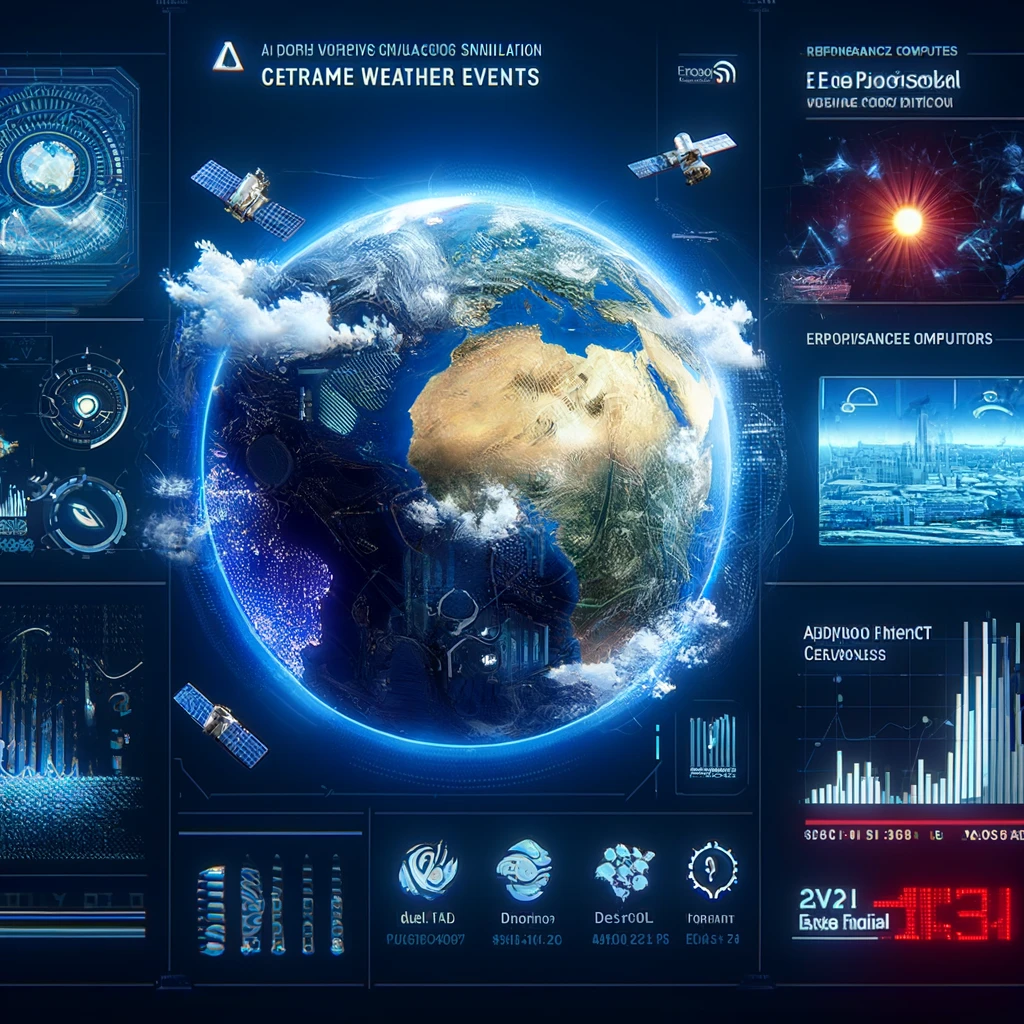The European Commission has unveiled the initial version of Destination Earth (DestinE), an innovative AI-powered simulator designed to enhance the accuracy of climate predictions. This groundbreaking tool represents a significant leap forward in environmental monitoring and predictive capabilities.
The first iteration of DestinE introduces two pivotal models: one focusing on extreme weather events and the other on climate change adaptation. These models are meticulously crafted to monitor, simulate, and predict the Earth’s climate with unprecedented detail and precision.
“DestinE allows us to observe environmental challenges and predict future scenarios like never before,” stated Margrethe Vestager, the EU’s antitrust chief. Her enthusiasm underscores the potential of DestinE to revolutionise how we understand and respond to climate dynamics.
DestinE’s power stems from Europe’s high-performance computing infrastructure (EuroHPC), including the LUMI supercomputer in Finland. By integrating artificial intelligence with these formidable computational resources, data processing speeds are significantly enhanced, enabling more sophisticated analyses and simulations.
“This initial phase showcases the immense potential when Europe combines its scientific excellence with its substantial supercomputing capabilities,” added Vestager. This sentiment reflects the collaborative spirit and cutting-edge technology driving DestinE’s development.
The project’s evolution will continue, with the goal of achieving a comprehensive digital twin of the Earth by the decade’s end. This future version aims to incorporate an extensive range of data sources to refine its predictive accuracy further.
The Promise of a Digital Twin of the Earth
Imagine being able to test how a heatwave might impact food security, assess the potential flooding of a city from a storm, or identify the optimal locations for wind farms. These capabilities and more are what the digital twin of the Earth promises to deliver.
Drawing from a vast reservoir of data, including inputs from the EU’s Copernicus programme satellites, IoT sensors, and extensive governmental datasets, the digital twin aims to provide detailed predictions and simulations. Future enhancements will expand this data collection to include oceans, cities, forests, and virtually every corner of our planet that can be scientifically analyzed.
Since its inception in 2022, the EU has invested over €300 million in the development of DestinE. Today’s launch concludes the first phase and heralds the beginning of the second phase, each backed by over €150 million in funding. The third phase will depend on the finalisation of the Digital Europe programme 2025-2027, which is currently under development.
The EU is not alone in pursuing this ambitious technology. In March, Nvidia introduced its digital twin, Earth-2, with the government of Taiwan already utilising it to better predict typhoon landfalls.
This year’s TNW Conference will feature the theme Ren-AI-ssance: The AI-Powered Rebirth, exploring the cutting-edge advancements in artificial intelligence. Loyal readers interested in delving deeper into these topics can use the code TNWXMEDIA at checkout for a 30% discount on business passes, investor passes, or startup packages.


